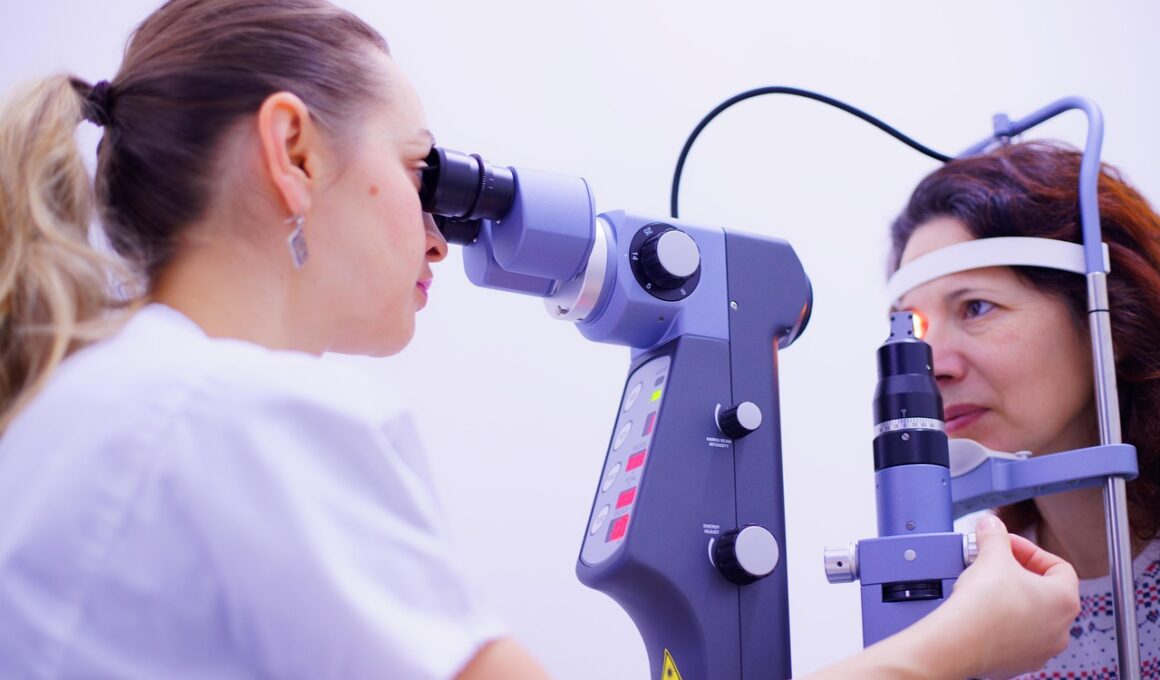Understanding the Role of Tear Production in Dog Eye Healing
Tears play an essential role in maintaining the health of a dog’s eyes and are critical in the eye healing process. They serve not just to moisturize, but they also provide necessary nutrients and help to flush out debris. When a dog experiences an eye injury, adequate tear production becomes even more vital. Insufficient tears can lead to complications, such as infections and delayed healing. A dog’s tears contain enzymes that combat invading bacteria and other pathogens. They also help in soothing irritation and inflammation in the affected area, ensuring comfort. To assess tear production levels, veterinarians often conduct a tear test, known as the Schirmer test. This simple procedure determines if the dog produces enough tears to support eye health. For pets with chronic eye issues or those recovering from eye traumas, assisted tear production might be necessary through artificial tears or other therapies. Understanding the significance of tears in eye health can guide dog owners in preventive care and timely interventions, ensuring their furry friends maintain healthy, comfortable eyes throughout their lives.
Maintaining eye health is crucial, particularly for working or active dogs exposed to various environments. Regular veterinary check-ups can help identify any eye conditions early on. Owners should be vigilant for signs of problems, such as excessive tearing, squinting, or redness. Awareness of unusual behaviors can lead to swift intervention, mitigating further complications. In some cases, conditions like dry eye or conjunctivitis may hinder tear production, necessitating medical attention. A veterinarian may prescribe medications or recommend dietary supplements rich in omega fatty acids, enhancing tear production naturally. Additionally, regularly cleaning a dog’s eyes can prevent debris accumulation, further promoting tears’ effectiveness in protecting the eyes. Staying proactive means ensuring a clear line of sight, thereby maintaining quality of life for your dog. Owners can also inquire about breed predispositions to eye conditions. Certain breeds have a heightened risk for eye-related issues due to anatomical features. Educating oneself about these risks helps in making informed decisions about care and preventive measures. Overall, vigilance combined with professional support is pivotal in managing and nurturing a dog’s eye health effectively.
Common Eye Injuries in Dogs
Eye injuries can occur from various causes, including foreign bodies, traumas, or chemical exposure. For instance, grass seeds can become lodged in the eye, causing irritation and pain. Similarly, accidental bumps or scratches can damage sensitive eye tissues. Chemical exposure can arise from household cleaners or other substances, potentially leading to severe injuries. Identifying eye injuries promptly is vital. Symptoms can include squinting, excessive tearing, and redness. If an owner suspects an injury, they should avoid touching the eye or applying any ointments until a veterinarian evaluates the situation. Immediate veterinary care is essential in preventing complications such as corneal abrasions or infections. Treatment protocols may involve flushing the eye to remove foreign bodies, administering medicated eye drops, or, in some severe cases, surgical intervention. Prevention is crucial; protecting eyes through training and supervision can minimize risks. Additionally, pet owners should regularly inspect their dogs for any signs of distress or discomfort. A proactive approach can save a dog from severe conditions while ensuring they get the appropriate care needed for recovery.
Dogs that exhibit frequent eye issues may benefit from specific lifestyle adjustments. For example, avoiding high-allergen environments or minimizing exposure to outdoor allergens can significantly help. Providing an optimal living environment includes ensuring that the home is clean and free from dust or irritants. During seasonal changes, changes in the dog’s diet may help strengthen their immune system, aiding in defense against allergens. Supplementation with omega-3 fatty acids can enhance overall eye health and tear production. Consulting with veterinarians about tailored diets can guide owners in supporting their pets’ specific needs. Additionally, regular grooming can help remove debris from fur that might irritate the eyes. Utilizing protective eyewear, especially during outdoor activities, can safeguard against potential injuries and irritants. For those dogs engaged in rigorous activities like agility, using protective goggles can prevent various injuries. Ultimately, involving veterinarians in the decision-making process when addressing eye health allows for personalized plans that effectively cater to an individual dog’s needs. This collaborative approach ensures that dogs stay healthy and happy, enjoying a better quality of life, safeguarding their vision along the way.
Recognizing Symptoms of Eye Problems
Dog owners should always be mindful of eye problems, as early diagnosis can significantly alter treatment outcomes. Common symptoms include persistent squinting, excessive tearing, or discharge. Other signs may include pawing at the eyes or avoiding bright light. These behaviors indicate potential discomfort or pain and require immediate veterinary attention. Understanding these symptoms allows owners to be proactive. Monitoring for changes, such as a cloudy or red appearance, can also signal that something is amiss. Prompt treatment is often essential to prevent severe infections or damage to structures in the eye. If a dog has experienced a recent injury, close observation is paramount in identifying any subsequent effects. Owners should keep an eye on their dog’s environment, especially if they live in a highly stimulating setting. Consistent reporting of any noted symptoms to the veterinarian will ensure speedy evaluations and interventions. After evaluation, a veterinarian might recommend treatments including medication, topical drops, or surgical options based on the severity. Maintaining an ongoing understanding of these symptoms ensures that dog owners keep their furry friends secure and well-cared for, preventing minor issues from escalating into significant problems.
Addressing the psychological aspects of eye injuries should not be overlooked. Dogs can suffer anxiety from pain or even the experience of treatment. Understanding this mental facet encourages owners to adopt gentle and calming approaches when addressing health concerns. Creating a soothing environment can significantly affect the dog’s recovery journey. Additionally, positive reinforcement training can help dogs feel more secure during treatments or examinations. Offering treats or praise can create a positive association with veterinary visits, promoting more cooperative behavior. Consequently, this emotional support can ultimately lead to better adherence to treatment protocols established by veterinarians. Owners should explore training options to ease their dogs into necessary care routines. Working closely with veterinarians can help develop effective strategies to minimize fear or anxiety related to eye treatment. Keeping consistent routines for feeding and exercise may also contribute to emotional well-being. The goal is to maintain a stable and supportive atmosphere, allowing dogs to recover faster while fostering trust. By addressing both physical and psychological aspects after eye injuries, dog owners ensure that their pets heal effectively, maintaining their eyesight and overall happiness.
Conclusion: Importance of Tear Production and Eye Health
Recognizing the critical role tears play in dog eye health ultimately empowers pet owners to prioritize their companions’ well-being. Understanding tear production’s multifaceted benefits helps in advocating for preventive care. By staying observant about potential eye problems and knowing the symptoms, owners can avoid complications. Developing a robust relationship with veterinarians will promote informed decision-making throughout their dog’s lives. Regular eye checks, alongside recognizing specific breed vulnerabilities, are crucial in maintaining optimal eye health. Furthermore, promoting tear production through proper diets and supplements can enhance healing capabilities. Owners must remain proactive, ensuring that environments are clean and free of irritants. Providing support for emotional wellness during treatment is equally important, as dogs can experience distress from injuries. Training and reassurance go hand in hand with medical interventions, ensuring a holistic approach to eye care. The unconditional love and care that dog owners provide contribute greatly to their furry companions’ liveliness and overall health. Overall, prioritizing eye health through understanding tear production ensures dogs enjoy healthy, vibrant lives, free from pain and discomfort. This commitment fosters happier dogs and strengthens the bond between owner and pet.



